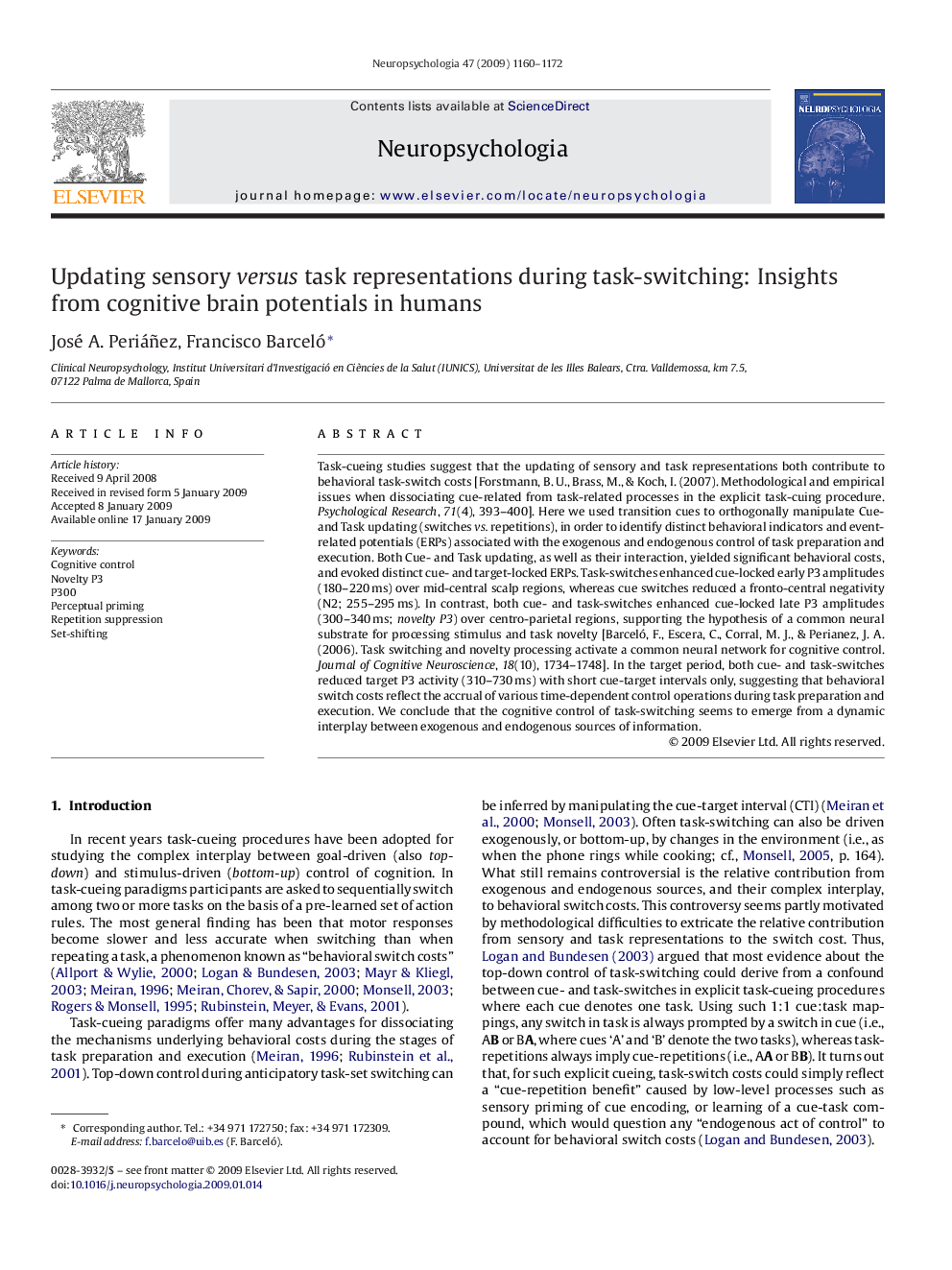| کد مقاله | کد نشریه | سال انتشار | مقاله انگلیسی | نسخه تمام متن |
|---|---|---|---|---|
| 10466632 | 925772 | 2009 | 13 صفحه PDF | دانلود رایگان |
عنوان انگلیسی مقاله ISI
Updating sensory versus task representations during task-switching: Insights from cognitive brain potentials in humans
دانلود مقاله + سفارش ترجمه
دانلود مقاله ISI انگلیسی
رایگان برای ایرانیان
کلمات کلیدی
موضوعات مرتبط
علوم زیستی و بیوفناوری
علم عصب شناسی
علوم اعصاب رفتاری
پیش نمایش صفحه اول مقاله

چکیده انگلیسی
Task-cueing studies suggest that the updating of sensory and task representations both contribute to behavioral task-switch costs [Forstmann, B. U., Brass, M., & Koch, I. (2007). Methodological and empirical issues when dissociating cue-related from task-related processes in the explicit task-cuing procedure. Psychological Research, 71(4), 393-400]. Here we used transition cues to orthogonally manipulate Cue- and Task updating (switches vs. repetitions), in order to identify distinct behavioral indicators and event-related potentials (ERPs) associated with the exogenous and endogenous control of task preparation and execution. Both Cue- and Task updating, as well as their interaction, yielded significant behavioral costs, and evoked distinct cue- and target-locked ERPs. Task-switches enhanced cue-locked early P3 amplitudes (180-220Â ms) over mid-central scalp regions, whereas cue switches reduced a fronto-central negativity (N2; 255-295Â ms). In contrast, both cue- and task-switches enhanced cue-locked late P3 amplitudes (300-340Â ms; novelty P3) over centro-parietal regions, supporting the hypothesis of a common neural substrate for processing stimulus and task novelty [Barceló, F., Escera, C., Corral, M. J., & Perianez, J. A. (2006). Task switching and novelty processing activate a common neural network for cognitive control. Journal of Cognitive Neuroscience, 18(10), 1734-1748]. In the target period, both cue- and task-switches reduced target P3 activity (310-730Â ms) with short cue-target intervals only, suggesting that behavioral switch costs reflect the accrual of various time-dependent control operations during task preparation and execution. We conclude that the cognitive control of task-switching seems to emerge from a dynamic interplay between exogenous and endogenous sources of information.
ناشر
Database: Elsevier - ScienceDirect (ساینس دایرکت)
Journal: Neuropsychologia - Volume 47, Issue 4, March 2009, Pages 1160-1172
Journal: Neuropsychologia - Volume 47, Issue 4, March 2009, Pages 1160-1172
نویسندگان
José A. Periáñez, Francisco Barceló,